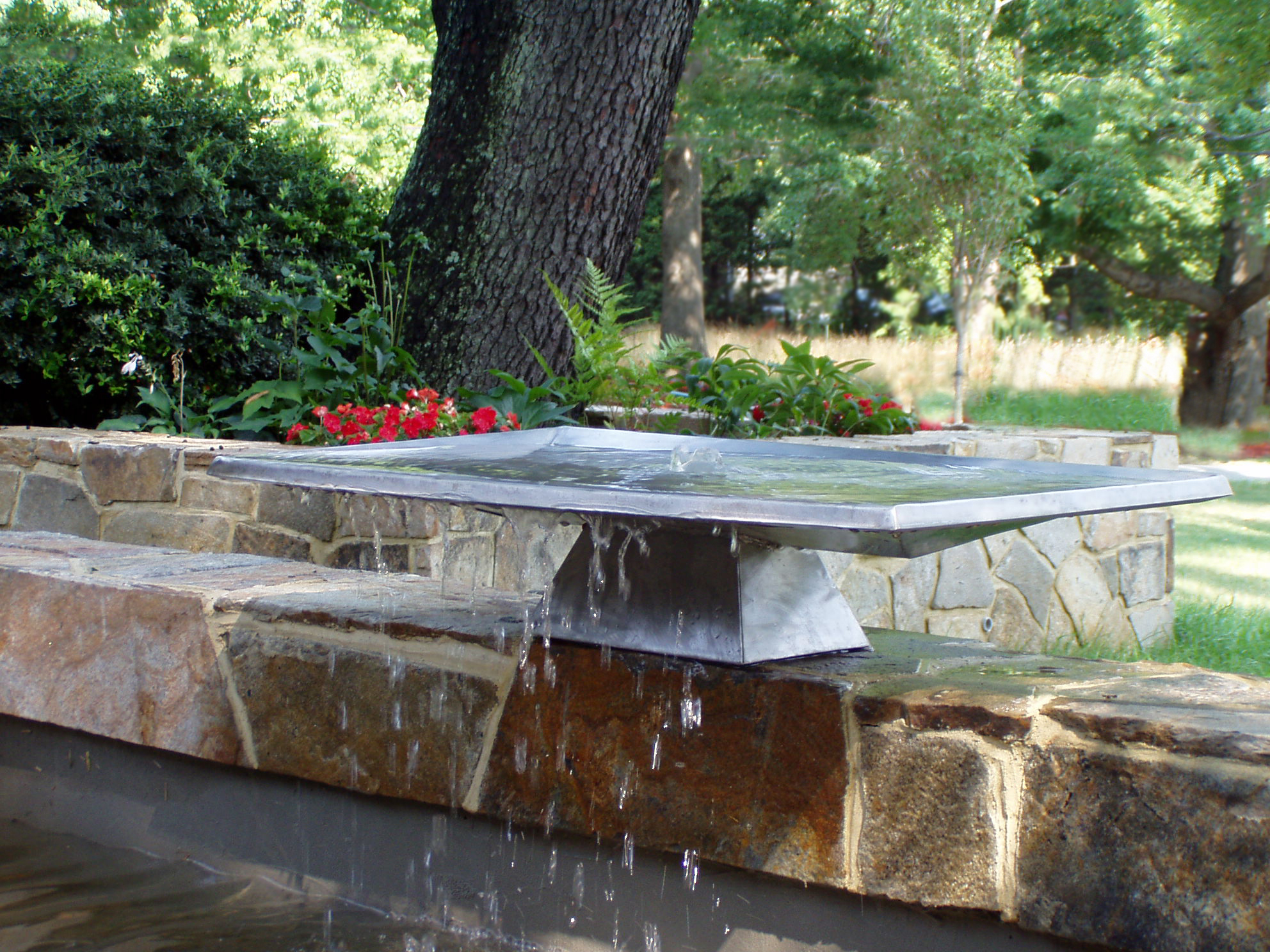- © 2024 Annapolis Home Magazine
- All Rights Reserved
By Kymberly Taylor

Fountains seem to complete a garden, no matter what size. The sounds of falling water calm the mind and invite small birds and other winged visitors to bathe and quench their thirst. I am always on the lookout for just the right fountain for my English cottage garden and haven’t found it yet. The understated steel basin pictured here caught my eye a while back, and I keep returning to this small gem. Each time I gaze at it, I study the form of the bowl poised effortlessly upon the edge and wonder at how the water cascades effortlessly into the pond below.
I learned that landscape architect Heike Nolker designed the fountain for a client who had purchased his 1960s childhood ranch-style home from his siblings. He needed a garden renovation; the existing landscape lacked cohesion. “There were rectangles of all different sizes… I saw tatami-sized rectangles, fat rectangles, and then L-shaped rectangles,” she explains. To instill a sense of calmness and unity in the landscape, she designed both fountain and fishpond using the proportions of the divine rectangle.
She explains: “In my travels, I have come across other fountains with similar proportions. It seemed appropriate to pick something that was fairly classic, so I chose the golden rectangle, the divine proportions. As designers, we always try to make it pleasing to our senses and to our eyes, and this is a classical proportion to use.”
The golden rectangle has a complex history and may contain Nature’s secret code. “These proportions apply to many things in nature, and I could send you down a whole rabbit hole of gold,” says Nolker.
The “rabbit hole of gold” I dove into, perhaps unwisely, revealed a few key points. A golden rectangle is one whose long sides are 1.618 times its width. An ancient Greek geometric form whose relative dimensions many believe are most pleasing to the human eye, the golden ratio may have first appeared in Euclid’s Elements in 300 BC.
Fibonacci, a medieval mathematician, introduced the concept to Western Europe. Leonardo da Vinci praised the ratio and believed it represented divinely inspired simplicity and order. The divine proportions appear in many masterpieces, including da Vinci’s Mona Lisa and famous structures such as the Great Pyramids, the Cathedral of Notre Dame, and the Taj Mahal.
Miraculously, scientists continue to observe the golden spiral and divine ratio in the patterns of nature, including seed heads and flower petals. For example, in a daisy, each petal is placed at 0.618034 per turn (out of a 360° circle), allowing for the best possible exposure to sunlight.
Perhaps this explains why I am drawn to this enchanting 2′ by 3.23′ fountain. The ancient “golden ratio” remains fundamental to composition. Yet, its appearances throughout our universe remain a mystery. What I do know is that by the end of my conversation with Nolker, I appreciated this simple fountain on a deeper level. I also have new respect for the way that landscape architects look at the world: through a lens that is much more mathematical and, thus, more divine than I thought.
LANDSCAPE ARCHITECTURE: Heike Nolker, heikenolker.com
To read more about The Golden Ratio, check out Divina Proportione by Luca Pacioli, illustrated by Leonardo da Vinci.
© Annapolis Home Magazine
Vol. 14, No 4 2023